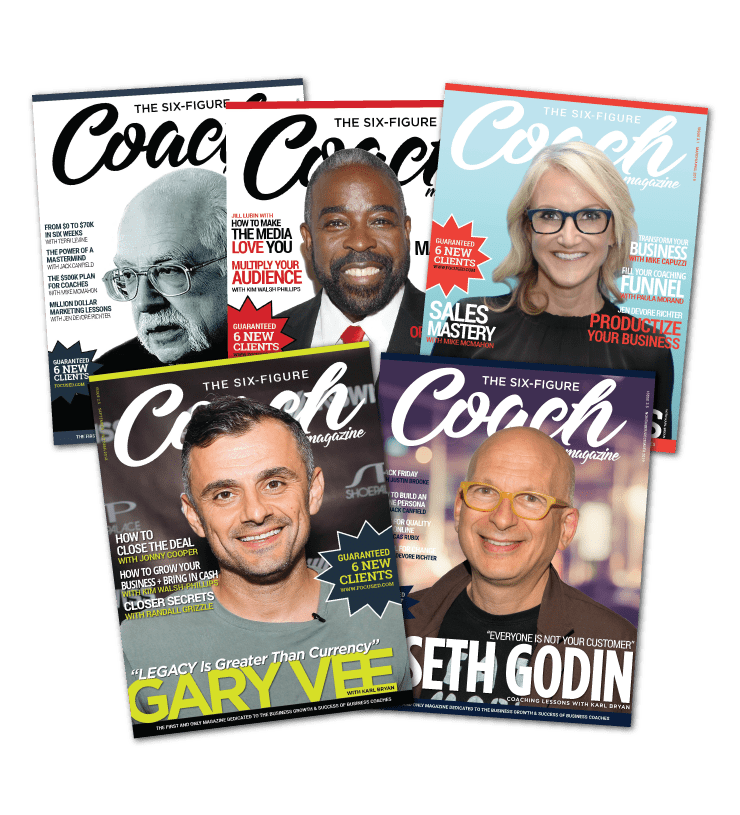The Power of Persuasion: How Coaches Can Help Clients Overcome Purchase Paralysis

In today’s marketing-saturated world, small business owners and coaches must face one undeniable truth:
Prospects don’t buy if they don’t feel safe.
Even when they like what they see, even when they want the solution you’re offering, they may still hesitate at the final step. Why? Because they haven’t been persuaded. They’re stuck in a moment of hesitation known as purchase paralysis—and it’s your job as a business owner or coach to help them move forward.
This is where the true power of persuasion in marketing comes into play.
Why Risk Reversal Is the Foundation of Persuasion
When a prospect encounters your business for the first time, they don’t know you, like you, or trust you. That’s not an insult—it’s reality.
Risk reversal is the practice of eliminating fear and hesitation from the buying process. You must proactively remove every objection or barrier between your prospect and the action you want them to take.
Until they feel that the risk is gone, they won’t move.
What Purchase Paralysis Looks Like (And Why It Happens)
Think of it like this:
Have you ever seen someone freeze in a high-pressure situation—completely unable to move? Fear creates a mental block, and the brain switches from action to protection mode.
Buying decisions—especially online—can produce a similar (though less dramatic) effect. The stakes may not be life-threatening, but the fear is real:
-
Fear of making a bad decision
-
Fear of wasting money
-
Fear of being disappointed (again)
-
Fear of looking foolish to others
As a business owner, you must learn to recognize and address these buying fears in your marketing and sales messaging.
Persuasion Is Not Information
Here’s the mistake most marketers make:
They try to educate their prospects into buying.
Information alone does not persuade. Facts, specs, and features do not build trust. People don’t buy because you told them how great your product is—they buy because they feel understood, safe, and confident.
Imagine being stuck in a burning building. Someone walks in and explains:
-
Fire is dangerous.
-
The structure is unstable.
-
Smoke inhalation is a serious health hazard.
All of that is true. But none of it actually moves you to act.
Now imagine a firefighter showing up and calmly saying:
“Take two steps forward. I’ve got your hand. Follow my voice—I’ll get you out of here.”
That’s persuasion in action.
How to Apply Persuasion in Your Marketing
You must become that firefighter in your marketing copy. You must speak directly to the fear, offer clarity, and guide your prospect through the decision.
Here’s how.
1. Identify the Fear
Start by pinpointing what your ideal prospect is afraid of. Some examples:
-
“What if this doesn’t work for me?”
-
“What if I waste my money?”
-
“What if this isn’t the right solution?”
2. Acknowledge the Fear
Let them know you understand where they’re coming from:
“If you’ve ever felt unsure about investing in another [product/service] that doesn’t deliver, you’re not alone.”
3. Show Them the Way Out
Offer a risk-free way to move forward. Tell them exactly what to do next and what will happen.
4. Reverse the Risk
This is where guarantees, refund policies, free trials, and performance-based results come in. Remove the fear of loss entirely.
A Proven Persuasive Marketing Formula
Use this simple 8-step persuasion framework in your ads, landing pages, or email campaigns:
- Interrupt: Start with a headline that grabs attention by speaking to a fear, frustration, or desire.
- Engage: Immediately promise a solution or outcome.
- Educate: Explain how your solution works in plain language.
- Differentiate: Share why you’re different from the competition.
- Demonstrate: Tell them exactly what steps they’ll take next.
- Add Value: Include a compelling bonus or incentive (if appropriate).
- Reverse Risk: Offer a strong, clear guarantee.
- Call to Action + PS: Restate the benefit and invite them to take action now.
Example: Writing Persuasive Copy That Converts
Instead of:
“We offer top-rated financial planning services.”
Try:
“Worried about wasting money on another financial ‘expert’? We get it. That’s why we offer a 30-day results-first guarantee—so you don’t pay unless we deliver.”
This copy speaks to fear, builds trust, offers clarity, and removes risk—all in one message.
Final Thought: Persuasion Is About Leadership
Great persuasion isn’t about pressure or manipulation. It’s about leadership.
It’s about saying:
“Hey, I know you’re stuck. I know you’re worried. But I’ve helped others through this exact challenge—and I can help you too. Just take the next step. I’ll guide you the rest of the way.”
Most people want to take action. They’re just waiting for someone to show them how to move forward without fear.
When you master the art of persuasion marketing, you give your prospects that confidence—and you give your business a major advantage.
Coming Next: Risk Reversal Strategies That Drive More Conversions
In the next article, we’ll explore the most effective ways to use guarantees, free trials, and low-barrier offers to eliminate buying hesitation and close more sales.

About Adrian Ulsh
Adrian Ulsh is the CEO for Leader Publishing Worldwide, the largest online provider of coaching services worldwide. Adrian currently works with more than 500 coaches in 24 countries advising them on building 6 and 7 figure coaching practices.


